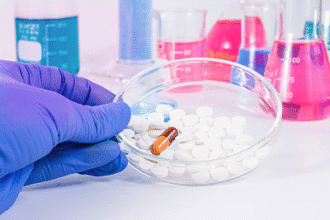Gastroesophageal Reflux Disease (GERD)
Gastroesophageal Reflux Disease (GERD) is a common chronic condition characterized by the reflux of stomach and duodenal contents into the esophagus. This backflow leads to symptoms of heartburn, regurgitation, and can damage esophageal and extraesophageal tissues such as the throat, larynx, and airways.
Classification
- Reflux Esophagitis (RE): Erosive damage or ulceration of the esophageal mucosa confirmed by endoscopy.
- Non-Erosive Reflux Disease (NERD): Typical reflux symptoms without endoscopic evidence of mucosal injury.
Epidemiology
- Global Prevalence:
- 10%–20% in Europe and North America.
- Approximately 5% in Asia.
- Demographics:
- Affects men and women equally.
- Prevalence increases with age, peaking in middle-aged and older adults.
Pathophysiology
GERD develops due to an imbalance between aggressive factors and the esophagus’s defense mechanisms:
- Lower Esophageal Sphincter (LES) Dysfunction:
- Transient LES relaxations or hypotensive LES allow reflux of gastric contents.
- Hiatal Hernia:
- Disruption of the diaphragmatic crura can weaken the gastroesophageal junction.
- Delayed Gastric Emptying:
- Prolonged stomach retention increases reflux episodes.
- Impaired Esophageal Clearance:
- Reduced peristalsis or saliva production diminishes acid clearance.
- Mucosal Defense Impairment:
- Increased mucosal permeability and reduced bicarbonate secretion.
Clinical Manifestations
Typical Symptoms
- Heartburn: Burning sensation in the retrosternal area, often after meals or when lying down.
- Regurgitation: Upward flow of acidic or bile-containing gastric contents into the throat or mouth.
Extraesophageal Symptoms
- Chronic cough, hoarseness, throat clearing.
- Laryngitis, asthma-like symptoms, dental erosions.
Diagnosis
- Clinical Assessment:
- Symptom history and response to empirical therapy.
- Endoscopy:
- Visualizes mucosal erosions, strictures, Barrett’s esophagus.
- Esophageal pH Monitoring:
- Ambulatory 24-hour pH or impedance-pH testing to quantify acid exposure.
- High-Resolution Manometry:
- Assesses LES pressure and esophageal motility disorders.
- Barium Swallow Radiography:
- Detects hiatal hernia or structural abnormalities.
Management and Treatment
Lifestyle and Dietary Modifications
- Elevate head of bed by 6–8 inches.
- Avoid late-night meals and lying down within 2–3 hours after eating.
- Limit trigger foods: fatty foods, chocolate, caffeine, alcohol, acidic foods.
- Maintain healthy weight and avoid tight-fitting clothing.
Pharmacotherapy
- Antacids: Rapid relief for mild, intermittent symptoms.
- H2-Receptor Antagonists: Reduce gastric acid secretion (e.g., ranitidine).
- Proton Pump Inhibitors (PPIs): First-line therapy for moderate to severe GERD.
- Prokinetic Agents: Enhance gastric emptying and LES tone (e.g., metoclopramide).
Endoscopic and Surgical Options
- Endoscopic Therapies: Radiofrequency ablation (Stretta), endoscopic fundoplication.
- Surgical Fundoplication: Nissen or Toupet procedure to reinforce LES antireflux barrier.
Complications
- Esophagitis and Ulceration: Chronic inflammation can lead to bleeding and strictures.
- Barrett’s Esophagus: Metaplastic change with risk of progression to esophageal adenocarcinoma.
- Respiratory Complications: Aspiration pneumonia, chronic bronchitis, and asthma exacerbations.
Prevention and Follow-Up
- Regular endoscopic surveillance for patients with Barrett’s esophagus.
- Long-term PPI therapy in high-risk individuals.
- Ongoing lifestyle counseling and reinforcement of adherence to therapy.
References
- Vakil N, et al. The Montreal Definition and Classification of GERD. Am J Gastroenterol. 2006.
- Katz PO, et al. Guidelines for the Diagnosis and Management of Gastroesophageal Reflux Disease. Am J Gastroenterol. 2022.
- Fass R, et al. Extraesophageal manifestations of GERD. Dig Dis Sci. 2020.







